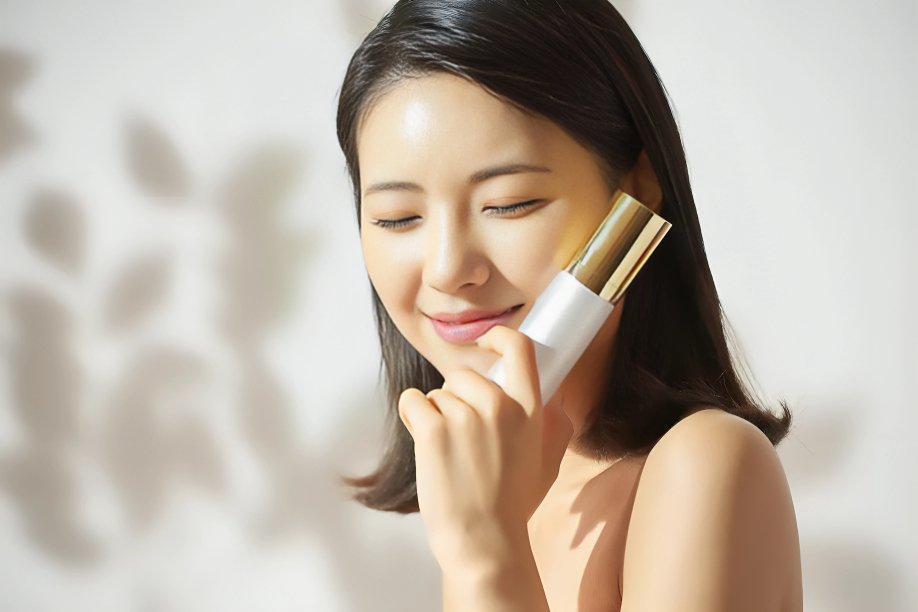Japanese vs Korean Skincare Routine? Find Your Perfect Match!
The skincare universe is extensive, yet two skincare behemoths hold prominence—Japanese vs Korean skincare. Both are incredibly popular for their individual philosophies on obtaining flawless skin. Though similar in some ways, each regimen differs in its philosophy, ingredients, and methods. If you’re unsure which is best for you, this article will assist you in understanding the differences and making your ideal match!

Philosophy: Holistic vs. Minimalist For Japanese vs Korean Skincare
Korean Skincare: The Holistic Glow
Korean skincare is based on the ideology of obtaining a “glass skin” appearance—skin that is clear, radiant, and well-moisturized. The routine revolves around moisturizing, feeding, and preventing, with an emphasis on numerous layers of skincare to penetrate deeply and heal the skin internally.
The Korean method is very adaptable, emphasizing self-indulgence and self-care. Be it through serums, ampoules, or hydrating essences, Korean skincare enthusiasts love the experience as much as the outcome.
Japanese Skincare: The Minimalist Purity
Japanese skincare, however, is a “less is more” philosophy. Japanese skincare is about having healthy skin with a minimalist yet efficient routine. In contrast to Korean skin care’s multiple layers, Japanese skin care focuses on cleansing, moisturizing, and protecting.
Japanese beauty products tend to emphasize natural ingredients and classic formulations, like fermented rice water and seaweed. Skincare philosophy in Japan is deeply rooted in tender care, striving for skin that appears healthy-looking and not over-done dewy.
Step-by-Step Comparison
Step 1: Cleansing
Korean Skincare: Double cleansing is essential in Korean skincare. It starts with an oil cleanser to break down sunscreen and makeup, and then a water cleanser to eliminate dirt and impurities.
Japanese Skincare: The Japanese skincare routine also adheres to a double cleansing regimen, but it tends to use gentle cleansing oils with traditional ingredients such as rice bran and camellia oil, followed by a foaming cleanser for a refreshing sensation.
Step 2: Exfoliation
Korean Skincare: Chemical exfoliants such as AHAs, BHAs, and PHAs are commonly utilized for exfoliating to make the skin look and feel smooth and radiant without aggressive scrubbing.
Japanese Skincare: Enzyme powders or rice bran exfoliators are preferred in Japanese skincare as they are soft and natural yet effective at shedding dead skin cells without any irritation.
Step 3: Hydration and Treatment
Korean Skincare: Korean skincare emphasizes hydration, and it’s delivered in the form of several layers of toners, essences, serums, and ampoules. They all help to deeply moisturize, lighten, and address concerns such as acne and hyperpigmentation.
Japanese Skincare: The Japanese approach is based on lotions, which are light hydrating toners that prepare the skin for moisture. Rather than having several treatment layers, they use an all-in-one serum or a good essence to keep things uncomplicated.
Step 4: Moisturization
Korean Skincare: Korean skincare has a variety of moisturizers, depending on skin type, ranging from gel creams to heavy night masks. Sleeping masks are also used as a method of intense nourishment for the skin while sleeping.
Japanese Skincare: Japanese skincare focuses on light hydration using gels, emulsions, and light creams that dry quickly and leave long-lasting moisture without being heavy.
Step 5: Sun Protection
Korean Skincare: Korean sunscreens are renowned for their light, dewy, and non-oily textures, which are commonly loaded with skincare properties such as hydration and brightening.
Japanese Skincare: Japanese sunscreens are among the most high-tech in the industry, with watery, quickly-absorbing, and strongly protective textures. They are many of them are of higher UV-blocking power and sweat-resistant.
Key Ingredients
Korean Skincare Favorites
Snail Mucin: Hydrates and repairs the skin.
Centella Asiatica: Calms and soothes irritation.
Hyaluronic Acid: Intense hydration.
Propolis: Natural anti-inflammatory.
Ginseng: Increases circulation and rejuvenates the skin.
Japanese Skincare Staples
Rice Bran: Lightens and smooths skin tone.
Camellia Oil: Moisturizes and guards the skin.
Green Tea: Antioxidant that combats aging.
Fermented Ingredients: Enhances skin elasticity and moisture.
Seaweed Extract: Vitamins and minerals.
Which Routine is Right for You?
Select Korean Skincare if:
✔ You prefer a lengthy skincare routine with several steps.
✔ You desire radiant, well-hydrated skin with a “glass skin” finish.
✔ You enjoy trying various serums, essences, and ampoules.
✔ You have certain skin issues such as acne, dullness, or pigmentation.
✔ You enjoy skincare containing popular and new ingredients.
Opt for Japanese Skincare if:
✔ You are a minimalist who prefers a low-key skincare regimen.
✔ You prefer light, fast-absorbing products.
✔ You possess sensitive skin requiring soft, natural ingredients.
✔ You prefer traditional beauty methods with time-tested formulas.
✔ You prioritize long-term skin health over quick fixes.
Final Thoughts
Both Japanese vs Korean skincare regimens have their strengths. If you adore a decadent, multi-step process that gives your skin instant glow, Korean skin care routine is ideal for you. If you like a clean, effective regime with lasting advantages, Japanese skincare routine is your winner. Ultimately, the greatest skincare regimen is one that functions with you and keeps your skin happy!
Regardless of which team you’re on, the secret to gorgeous skin is consistency, good products, and a genuine understanding of what your skin requires. Happy skincare journey!
Mystiqare is a progressive Japanese skincare products in India dedicated to (transforming) the beauty industry by integrating the science and art of the Japanese vs Korean Skincare Routine.

